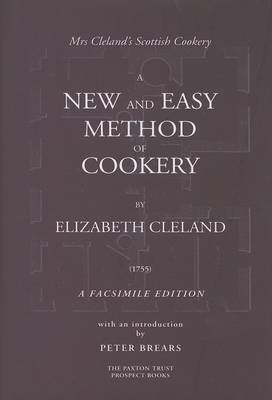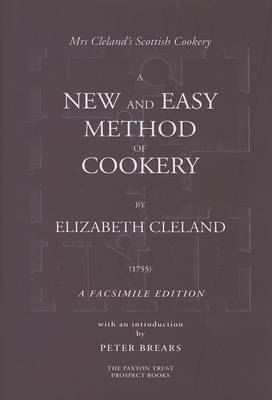
- Afhalen na 1 uur in een winkel met voorraad
- Gratis thuislevering in België vanaf € 30
- Ruim aanbod met 7 miljoen producten
- Afhalen na 1 uur in een winkel met voorraad
- Gratis thuislevering in België vanaf € 30
- Ruim aanbod met 7 miljoen producten
Zoeken
Omschrijving
Elizabeth Cleland was a teacher of cookery in Edinburgh in the mid-18th century. She wrote a general handbook of cookery for her pupils, and sold it more widely in the book trade in Scotland and England. Eventually, it went through several editions; it was the only book we know she wrote. Most early cookery books originated in London; for example, there is only one Scottish cookbook earlier than Elizabeth Cleland's. Her text, therefore, is of great interest for what it says about the state of Scottish cookery at the time. Although in fact dependent on English practice and fashion, Cleland's language and vocabulary makes her Scottish origins clear. Cleland's text covers all the main categories of recipe, including those needed in the kitchen, the brewhouse, and the pickling and preserving still-room. There are many pie and pasty recipes as well as a few notes of medicines and cures. The print is clear and handsome. This edition is published jointly with the Paxton House Trust, a country house designed by Robert Adam near Berwick-upon-Tweed, now open to the public. The copy which has been used for the facsimile has definite links to the house. These are explained, as is something of the domestic organisation necessary for production of this style of food, in an introduction by Peter Brears, one of Britain's foremost experts on historical kitchen equipment and famed for his reconstructions of early English cookery (for instance at the kitchens of Hampton Court).
Specificaties
Betrokkenen
- Auteur(s):
- Uitgeverij:
Inhoud
- Aantal bladzijden:
- 256
- Taal:
- Engels
Eigenschappen
- Productcode (EAN):
- 9781903018392
- Verschijningsdatum:
- 16/06/2005
- Uitvoering:
- Hardcover
- Formaat:
- Genaaid
- Afmetingen:
- 153 mm x 224 mm
- Gewicht:
- 462 g

Alleen bij Standaard Boekhandel
+ 169 punten op je klantenkaart van Standaard Boekhandel
Beoordelingen
We publiceren alleen reviews die voldoen aan de voorwaarden voor reviews. Bekijk onze voorwaarden voor reviews.








